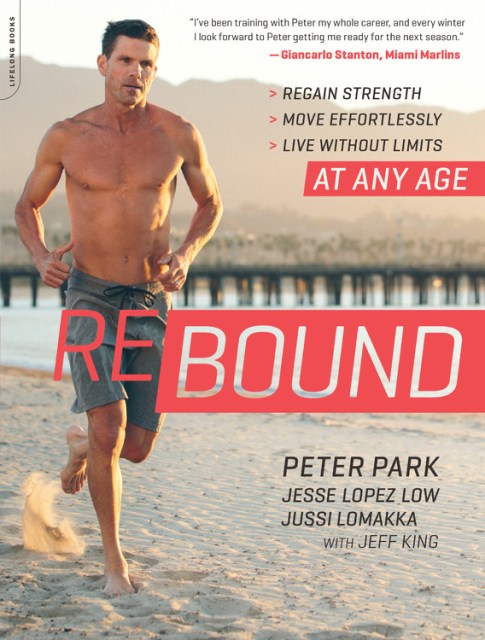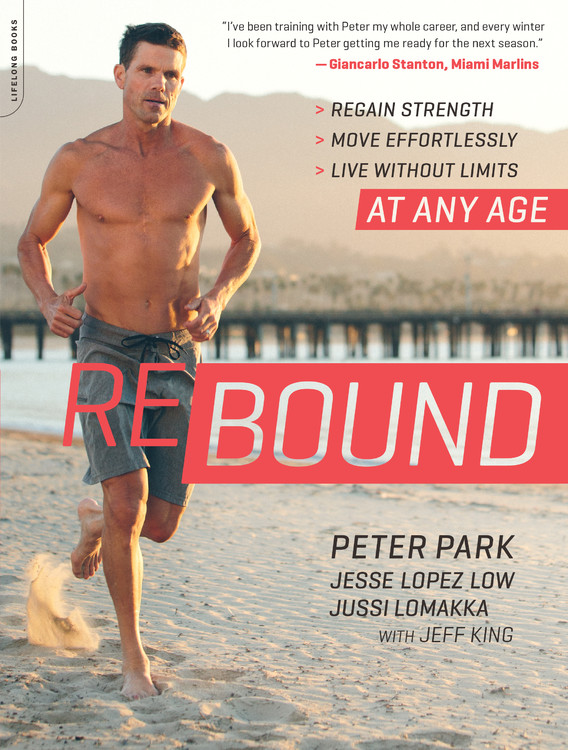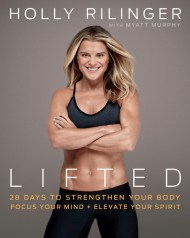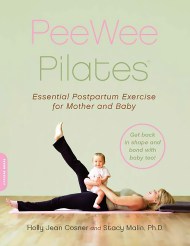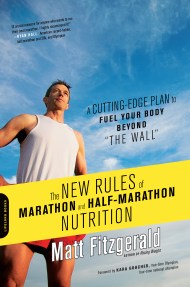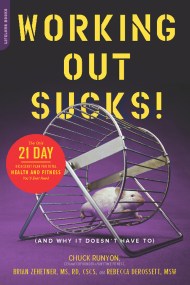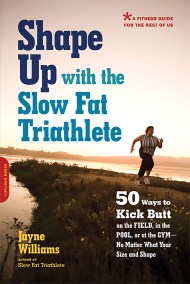Promotion
Use code MOM24 for 20% off site wide + free shipping over $45
Rebound
Regain Strength, Move Effortlessly, Live without Limits -- At Any Age
Contributors
By Peter Park
By Jesse Lopez Low
By Jussi Lomakka
With Jeff King
Formats and Prices
Price
$24.99Price
$32.49 CADFormat
Format:
- Trade Paperback $24.99 $32.49 CAD
- ebook $15.99 $20.99 CAD
This item is a preorder. Your payment method will be charged immediately, and the product is expected to ship on or around January 9, 2018. This date is subject to change due to shipping delays beyond our control.
Also available from:
Peter Park is a go-to trainer who has worked with pro athletes (Justin Verlander, Giancarlo Stanton) and celebrities (Matthew McConaughey, Maria Shriver, Rob Lowe). Park himself is a three-time World’s Toughest Triathlon Winner. As one of his clients says, “Having Peter as your trainer is kind of like having Bill Gates as your computer science teacher.” Now Park and his team bring their expertise to anyone who spends long hours at work, has lost strength, mobility, and freedom of movement, and who wants to get it all back. Park’s proven program will help readers reclaim fitness by learning functional movements designed to retrain poor patterns. With a series of workouts that build upon one another, readers will learn to get the whole body working together, restoring the core and regaining pain-free movement to truly live a life without limits.
Genre:
-
"Peter Park isn't just a trainer. He teaches me about nutrition and fitness, so that anywhere I go in the world I can keep fit, strong, and healthy on my own, and perform at the highest level."Harry Styles, musician
-
"Peter's been my trainer, workout partner, and friend since I was 12. No matter where I am in the world we talk almost every day. I would not be where I am now if it wasn't for Peter, no doubt."Lakey Peterson, professional surfer
-
"I have a tremendous amount of respect for Peter as a trainer, and I'm proud to call him my friend. He's developed incredible coaching wisdom through years of experience training clients and putting himself through rigorous workouts, and that wisdom generates results, plain and simple."Ben Bruno, strength and fitness trainer
-
"For me Peter has been all things: fitness trainer, rehab coach, mentor, and trusted friend. He comes to many of my races, to the hospital after crashes, and is on the phone with me when I have questions or doubts. Except for me, no one is more committed to my success than Peter."Ken Roczen, Motocross and Supercross champion
-
"I'm in the best shape of my life thanks to Peter."Chris Silbermann, President, International Creative Management
-
"After a year of recovering from injuries, I had to figure out how to get my fitness back. I started working with Peter Park. He not only got me strong and mobile again, but also he got my fitness up to a new level. Being healthy and strong allowed me to play at my peak potential again."Justin Verlander, six-time MLB All-Star, Houston Astros
-
"When a TV series I'm working on goes on hiatus or a movie I do finishes shooting, I always head back to Peter to get me back in shape."Rob Lowe, actor
-
"I never liked lifting weights, but after I worked with Peter for two weeks, his training opened my eyes. No doubt Peter's had an impact on my game."Diana Taurasi, Phoenix Mercury
-
"I've been training with Peter my whole career, and every winter I look forward to Peter getting me ready for the next season."Giancarlo Stanton, Miami Marlins
-
"Rebound is one of those [fitness] bibles, an exceptional book full of sensible advice and clear explanations of why and how."Santa Barbara Independent
- On Sale
- Jan 9, 2018
- Page Count
- 304 pages
- Publisher
- Da Capo Lifelong Books
- ISBN-13
- 9780738219493
Newsletter Signup
By clicking ‘Sign Up,’ I acknowledge that I have read and agree to Hachette Book Group’s Privacy Policy and Terms of Use
